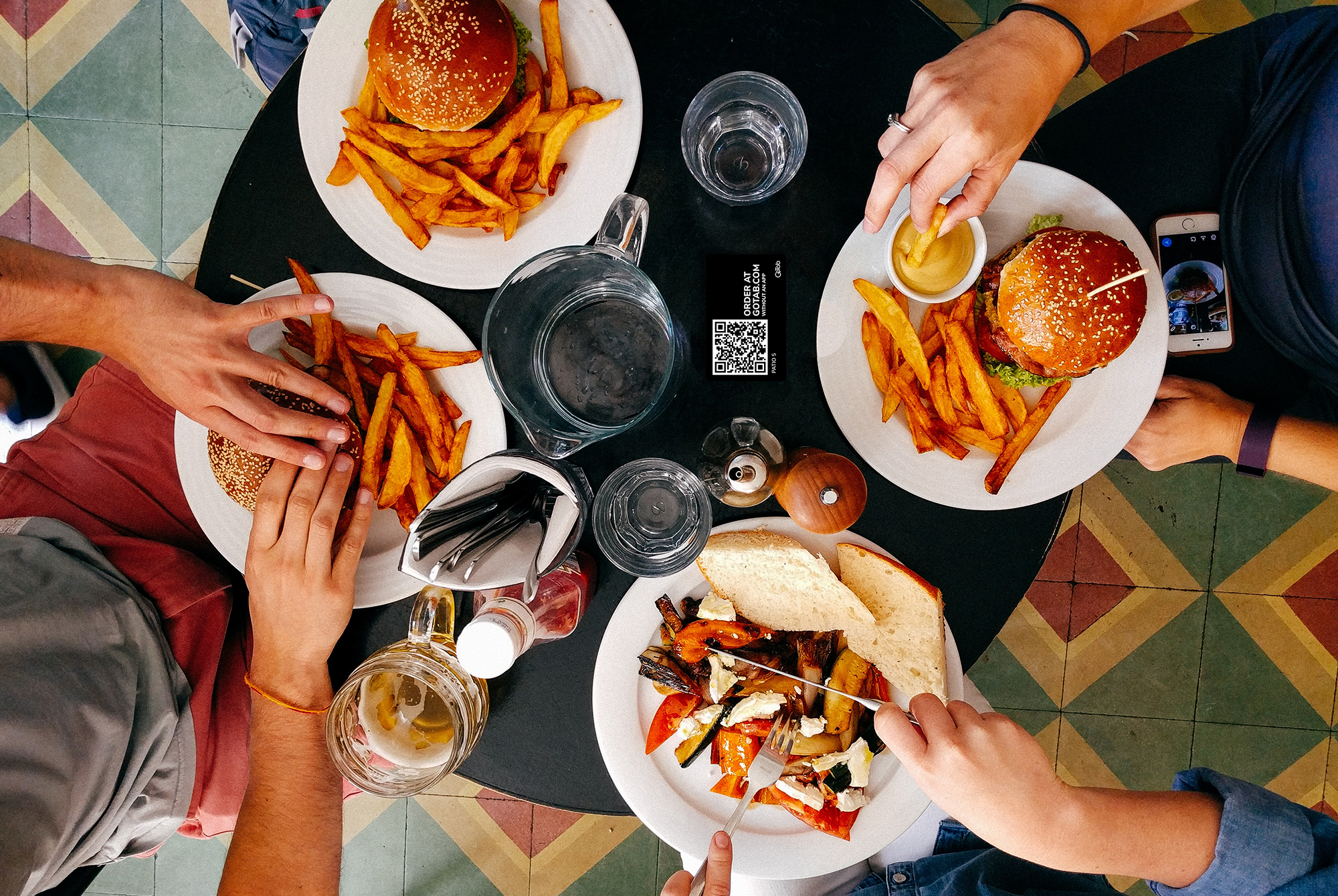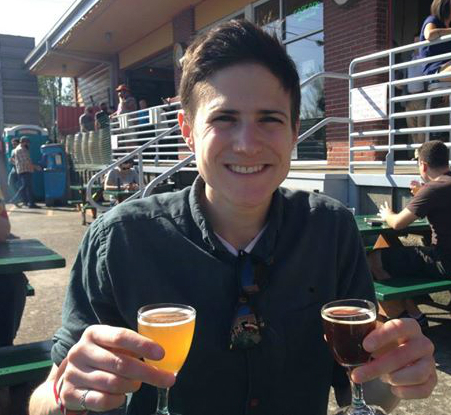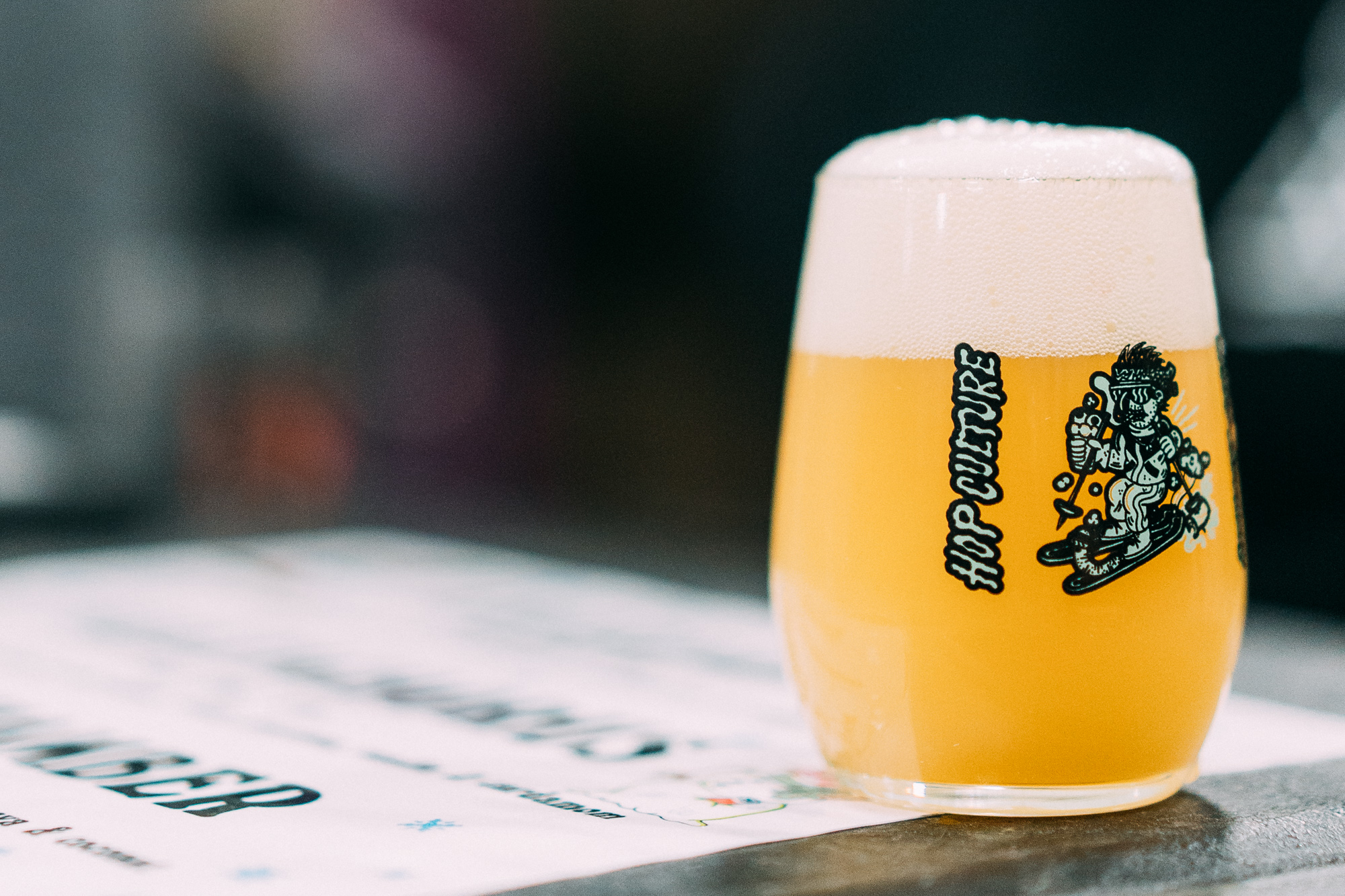Shop
The Future of Beer: How GoTab is Changing the Way Breweries Do Business
How one company has helped breweries adapt in the era of COVID-19
Drinking culture today has changed. Bustling bars, packed taprooms, and crowded breweries are a thing of the past. Now, when you decide to visit your favorite neighborhood brewery, you walk into a very different scene. Maybe the taproom down the street only has outdoor seating open for drinking. Or, depending on where you live, there are a select few tables indoors. Servers walk around with masks. Tables are spread out at least six feet apart. And hand sanitizer bottles abound.
The ramifications of the COVID-19 pandemic have forced businesses to completely overhaul their practices from back-of-house to front-of-house, carrying out new safety precautions for their consumers to make them feel safe during a pandemic. Even the most basic actions at a brewery have changed.
For example, how do you order your beer in the middle of a global crisis?
Traditionally, a server would come to your table to write down your order. Or, perhaps the taproom employed a counter-service model where you stood in line to nab a beer from someone behind the bar. Both pose their own challenges during a worldwide epidemic, increasing the amount of human interaction.
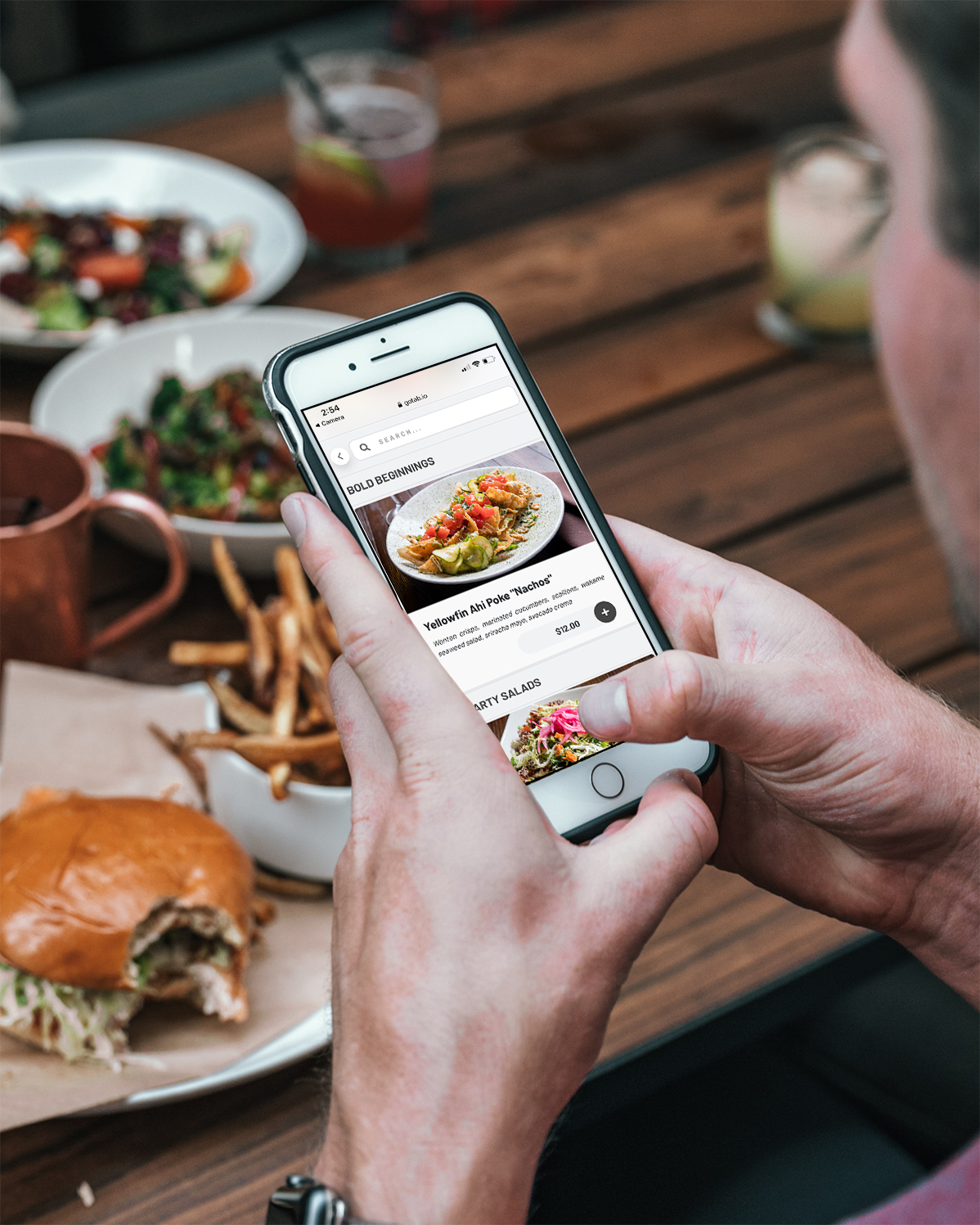
What if you could order your beer without talking to a single person, touching an unknown surface, or standing in one line? GoTab, a contactless ordering and payment web service, offers just this solution.
With a single tap on your phone, GoTab allows you to access a brewery’s menu, place your order, ask a server for more water, put in a request for additional ketchup, pay your bill, leave a tip…you get the idea; it’s all-encompassing.
Beyond the consumer safety applications of the program, GoTab has distinct advantages for a brewery’s bottom line, increasing check orders, improving Yelp reviews, creating more efficient service, and designing a better customer experience.
“How do you romance the beer in these awkward times?”
In today’s touchless world the all-in-one ordering system has quickly become the business of the future for breweries.
What is GoTab?
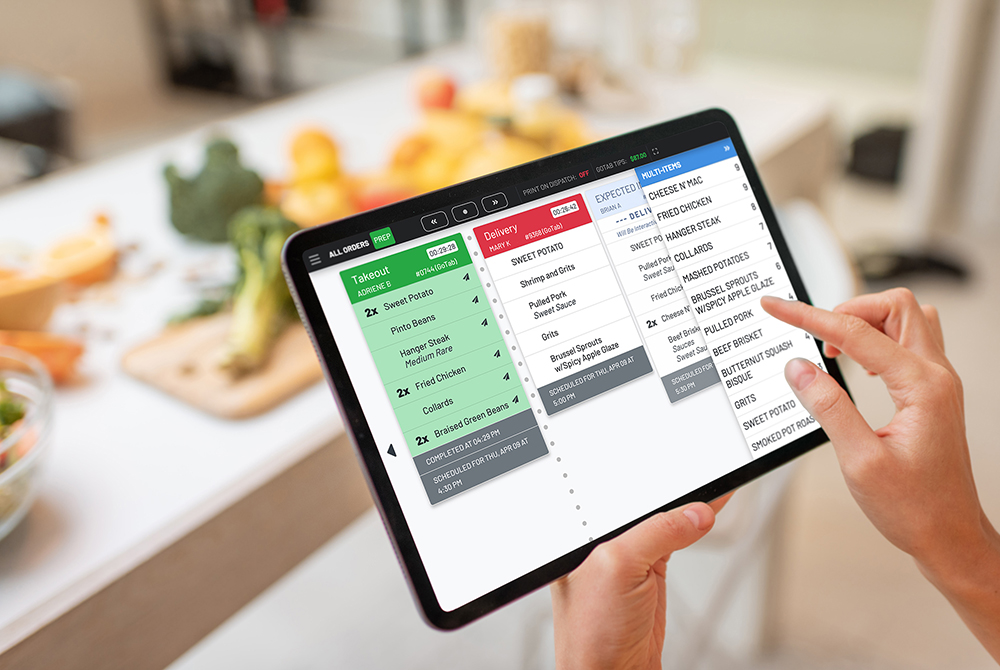
Started in 2016 by Tim McLaughlin, who spent 15 years growing and thriving in e-commerce technology, working with clients like Mandarin Oriental Hotels, Goldman Sachs, and Sotheby’s Auction, GoTab originated as a web application based on leveraging QR codes.
Way before the word pandemic crossed anyone’s lips, GoTab added QR codes to a consumer’s check, so when a server brought your bill around you could simply scan the code and pay on your phone. The concept worked, but people weren’t ready for it and, in reality, the process didn’t save restaurants a ton of time, so not many businesses reaped the benefits.
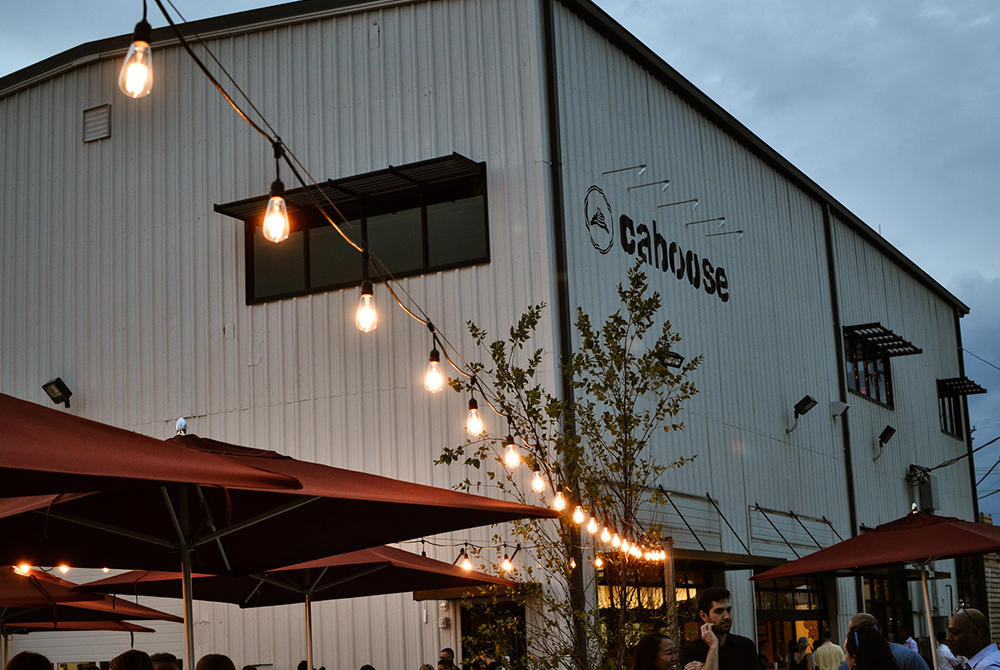
Serendipitously, Mclaughlin’s wife opened a brewery called Caboose Commons in Fairfax, VA in 2015. The 8,500 sq ft, three-story brewery featured multiple spaces including a big outdoor patio. Instead of launching with a traditional counter-service model, the pair decided to go all out, implementing what is now the GoTab mobile ordering product. At Caboose Commons to order a beer one simply scanned a QR code, accessed a menu, and selected beer or food through GoTab. It was the first time anyone had seen something like it in the States.
“That first weekend without anyone knowing how to scan a QR code we saw 1,300 orders come through the app,” said Christian Behrle, Head of Sales for GoTab. The team realized it had found its niche.
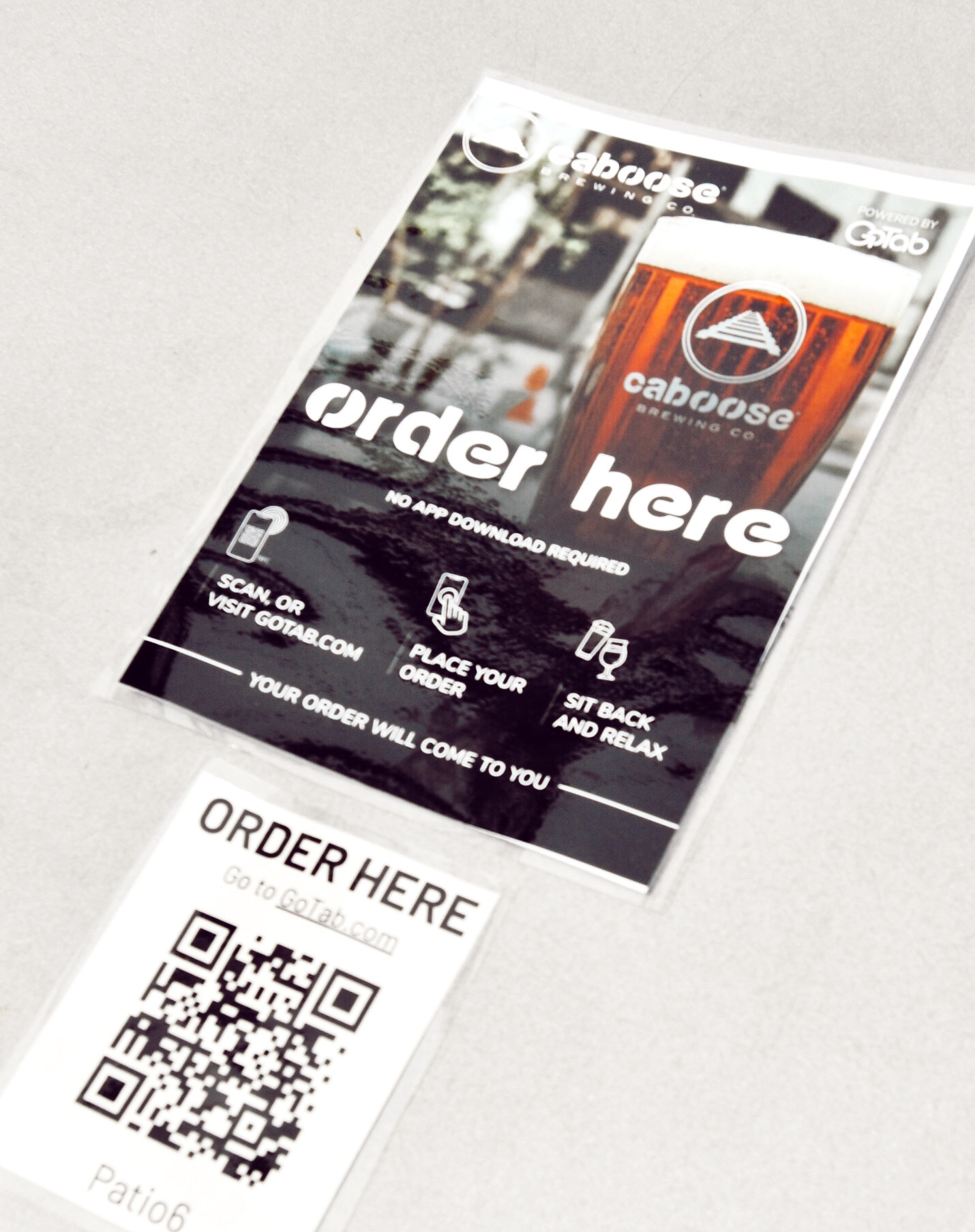
With Caboose Commons as its model, the company charged full steam ahead, targeting a very specific type of brewery, one with large taprooms, multiple spaces to activate, and a counter service or server model.
Based on its early success, GoTab had a theory that its best application would be in large venues that served people in a variety of spaces such as poolside, at the beach, or on a patio during those high peak volume hours like happy hours on Friday night or a busy beautiful Saturday afternoon.
GoTab and Stone Brewing
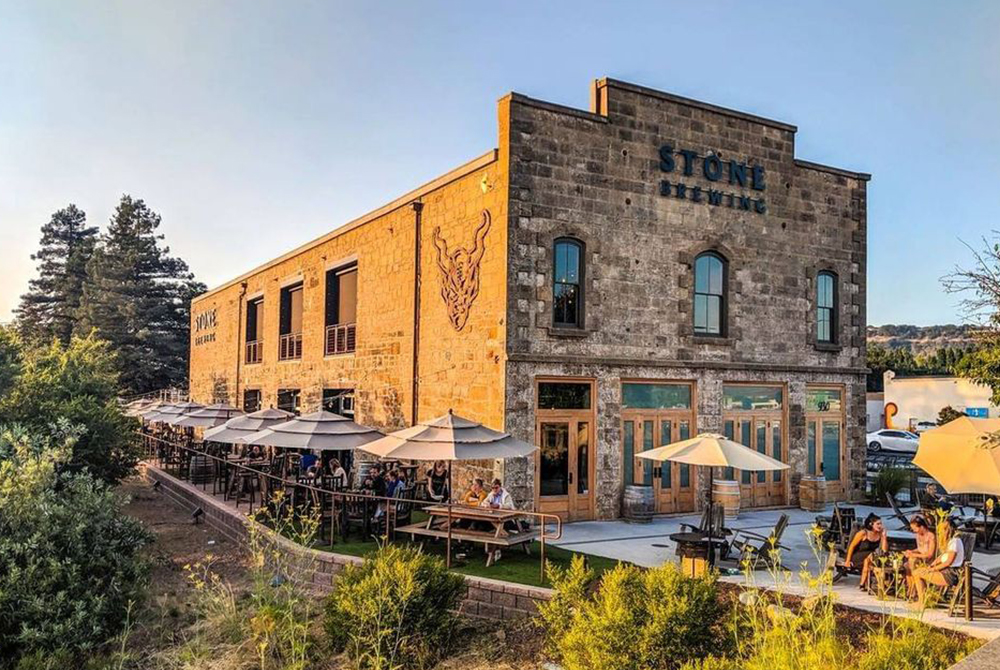
Places like Stone Brewing in Escondido, CA. Stone has a sprawling 70,000 sq ft estate with 700 seats across multiple spaces including a beautiful sprawling garden. And they were an early adopter of GoTab.
Stone’s idyllic outdoor area with a little creek and adirondack chairs was a favorite for visitors to lounge in. The problem? When someone ordered a new drink they had to walk all the way back across the patio into the bar, order, wait for their drink, and walk back out.
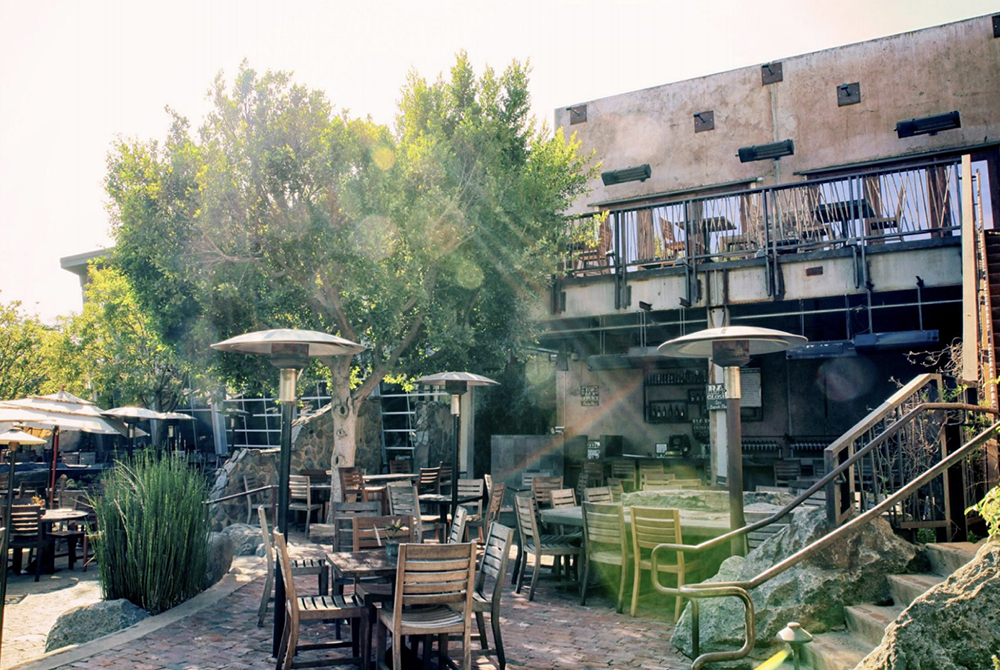
Essentially, Stone had a huge portion of their property that they couldn’t activate, meaning they were losing revenue. A challenge that badgered Gregg Frazer, Vice President of Hospitality at Stone Brewing.
In 2018 Frazer launched Stone’s first location in Shanghai, China, where contactless ordering had been the norm for quite a few years. Thrown into a culture ubiquitous with mobile payment, Frazer recognized the benefits of an intuitive, cashless society. When he returned to Stone’s taproom in Escondido he began to search for similar solutions.
Eventually, an acquaintance told Frazer about GoTab.
“I called Tim (GoTab’s CEO) and said, ‘You need to get here, I want this stuff,’” said Frazer.
In October of 2019 GoTab activated at Stone’s Escondido and Liberty Station restaurant, posting QR codes around the restaurant’s open spaces on A-frames, table tents, and even garden gnomes and 3D objects. Now, if someone sat down outside and wanted another beer they had only to scan the QR code to access the menu and order.
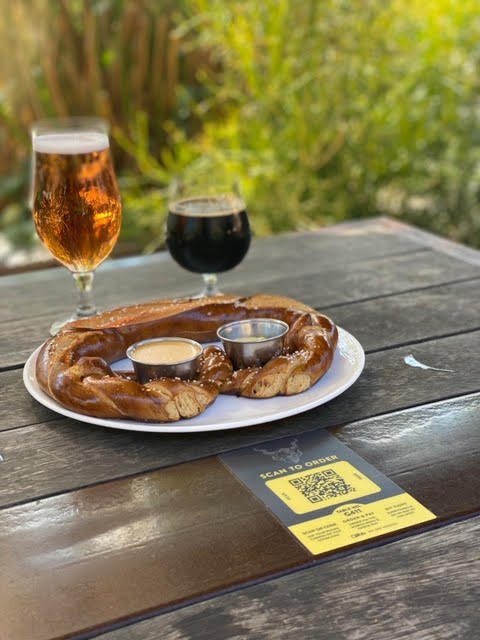
GoTab became a simple, elegant solution. But still, progress proved slow. While Stone immediately noticed the benefits, overall the rest of the industry remained reticent to shift from its traditional model to a completely new method. Contactless ordering just wasn’t catching on in the U.S.
Less than six months later everything changed. Everything anyone had ever known about operating hands-on at a restaurant or brewery changed overnight.
Simultaneously, GoTab found itself in a position to become a pioneer in the industry.
What Happens When You Go From Hands-On to Hands Off?
In March 2020 the COVID-19 pandemic hit the U.S., sweeping across the country leaving a devastating wake of economic catastrophe. As cities ordered mandatory shutdowns businesses like breweries and restaurants were especially hard hit as they were forced to close their doors to the public.
Overnight businesses sought out alternative streams of revenue and new solutions to their economic dilemmas. Within 10-15 days, eCommerce began to emerge as a viable solution for the hospitality industry. Breweries set up online stores, offered to-go options, and implemented delivery and shipping opportunities to replace the loss of on-premise sales.
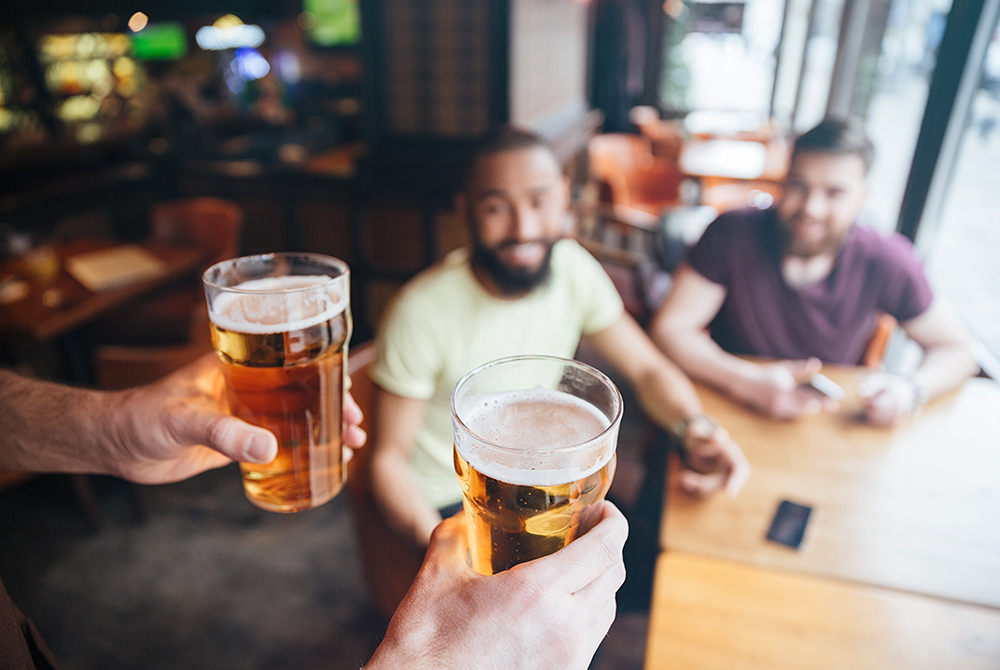
“COVID caused operators to take a step back and evaluate what they’re doing in their taproom and forced them to make new decisions,” said Behrle “You couldn’t continue to run your business like your dad did or how you did in the past. You had to evolve quickly.”
As dine-in experiences closed GoTab quickly adapted, transforming from just a mobile ordering system into a program that offered bespoke solutions for the hospitality industry whether that meant leveraging a demand to deliver straight to customers by integrating with Google Maps or DoorDash or setting up eCommerce grocery stores. As more operators began to reach out GoTab continued to update and build new features.
Beyond creating updated solutions from scratch, the company took a holistic approach to its customer service, eliminating its pricing structure and set up fees and activating locations within just a day of talking to an operator. GoTab easily turned on accounts and lowered the barriers of entry to help businesses simply survive.
“We’re very versatile and flexible depending on what the operator envisions for their concept and aesthetics. Whatever it is you want to accomplish we can tailor to you…[the service] is completely self-sustainable,” said Behrle. “With our consultative type of approach, there is no right way or wrong way to use the platform.”
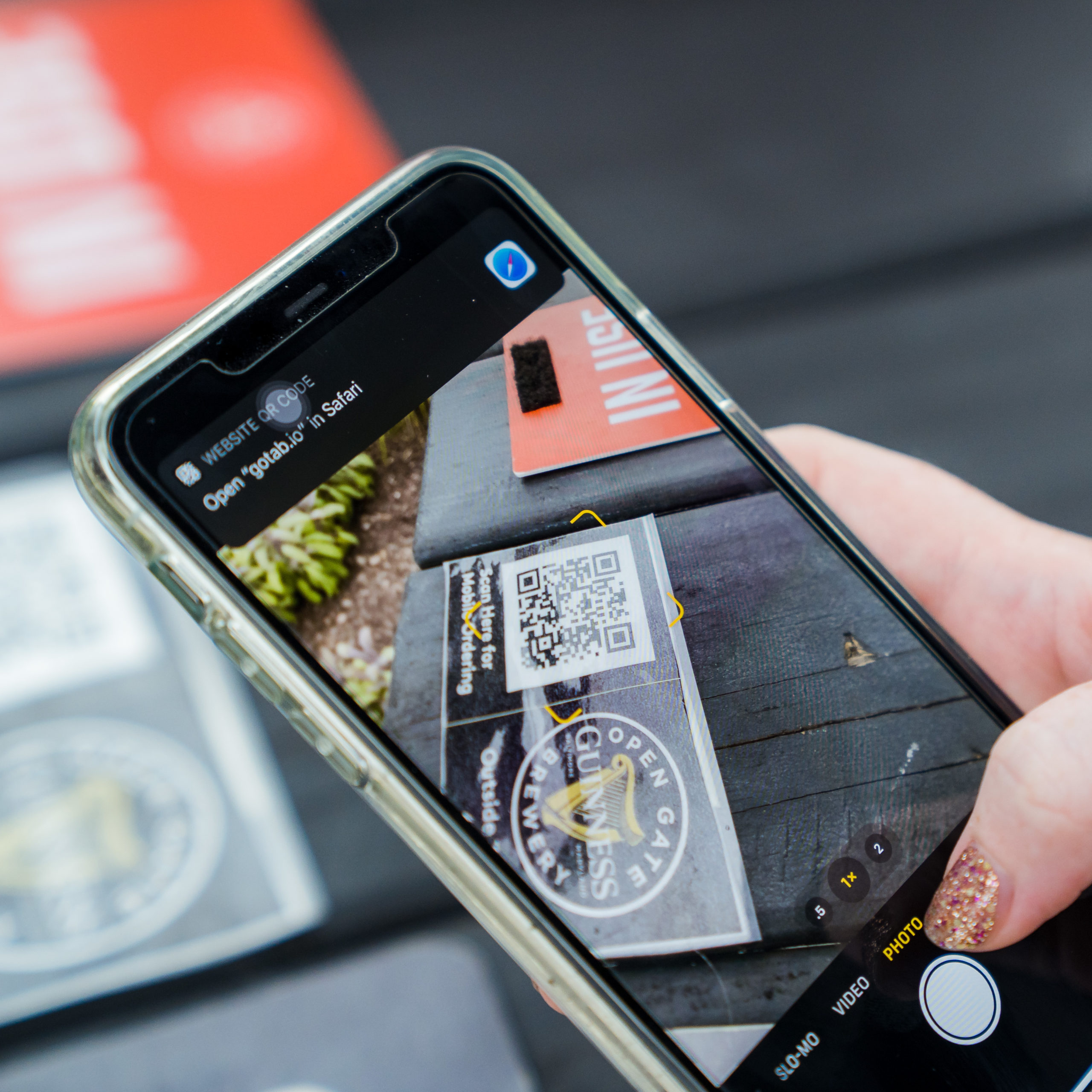
GoTab’s user-friendly, business-friendly approach proved successful. Before March GoTab counted about 80 restaurants and breweries as partners. Currently, they have over 200 breweries using GoTab, almost tripling its clientele in just about six months.
With the original intention to assist large venues, GoTab morphed during the global crisis and grew into a sustainable, reliable product implementing creative solutions.
For breweries, the business and consumer advantages of GoTab have been undeniable.
How is GoTab Changing the Game?
When the shutdown in California forced Stone to close its Escondido and Liberty Station restaurants, each employing 225 members and bringing in $12 million in revenue a year, Frazer knew he needed to develop a completely new strategy.
And fast.
“How do you solve the riddle of knowing that you’re going to do 50% less volume and be forced to take down the cost of labor all while not impacting the [customer] experience and still operate in the black?” asked Frazer.
It might seem like an insurmountable task, but “that’s where GoTab really fit in,” said Frazer, who approached the challenge by formulating what he called a labor-light model. Under his new approach, Stone reduced its staff and essentially turned everyone into a front-of-house (FOH) team member. Traditionally, your FOH team would include bartenders, bussers, runners, hosts, etc. With Frazer’s new model his staff rotated around, assigned to each one of these positions daily. “With the one team one dream mentality you’re all in it together,” said Frazer
Moving forward with a dedicated, but nonetheless leaner staff could have created a variety of pitfalls including slower service, but GoTab’s contactless model eliminated that worry, actually increasing the speed of fulfilling an order.
“A guest can walk in, sit at a table, open a tab with their phone, start placing orders, and have drinks and apps coming out within minutes,” said Behrle.
Frazer draws similarities between GoTab and Amazon. “You add items to your cart, check out when you’re ready, keep a tap open, and pay when you’re ready. People get that,” said Frazer.
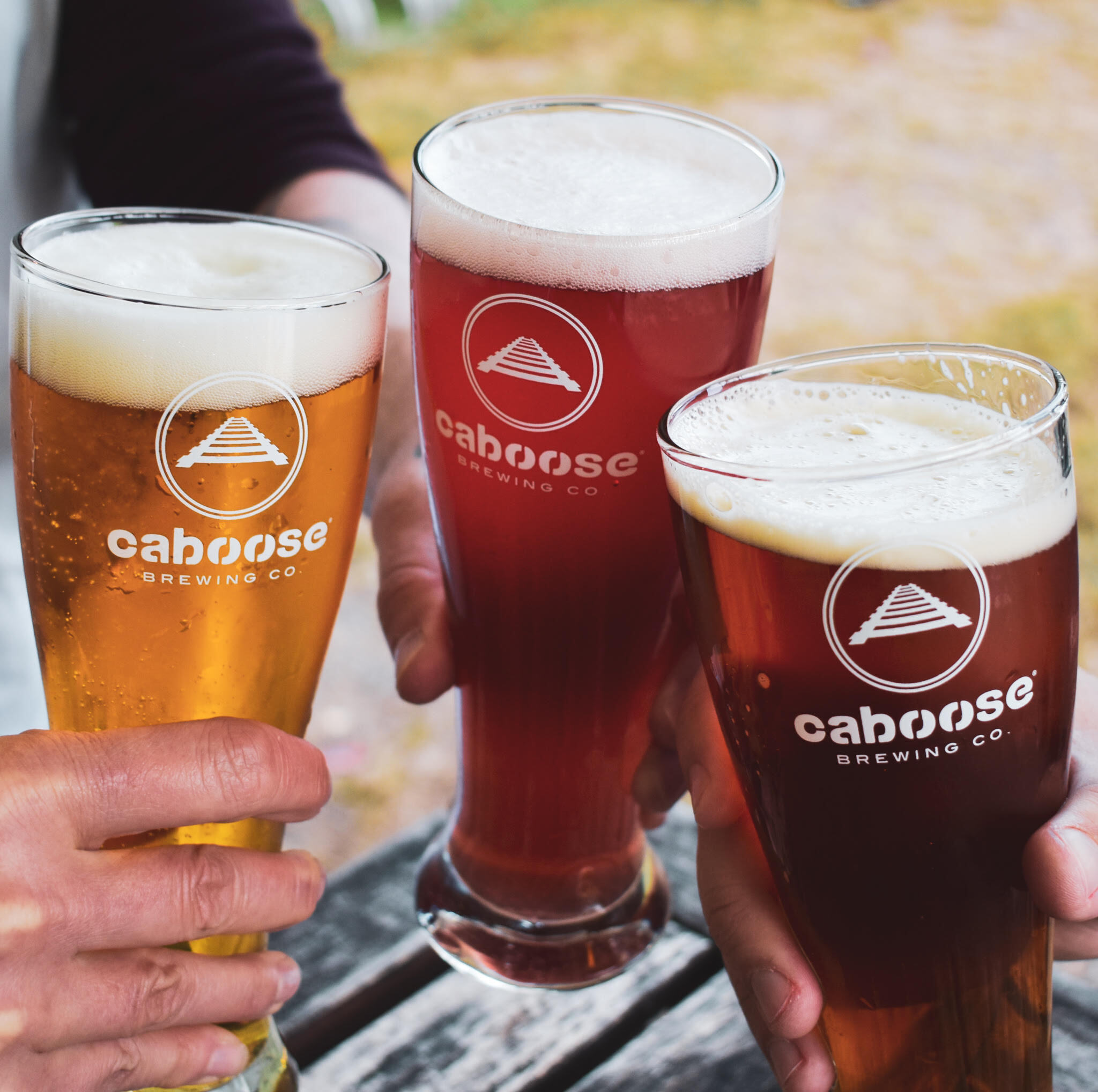
GoTab actually took a look at the data and found that a standard venue with the old counter-serve model can at its maximum serve 50-60 orders every 30 minutes. With GoTab businesses hit 130 transactions within that same 30 minute period. Digital orders skip over that bottleneck, go directly to the draft line, and let a bartender immediately pour out a drink.
“My biggest pain point when I go out to eat is if you sit me at a table and it takes seven to eight minutes for that first beer to arrive,” said Frazer. “However, if one beer takes two minutes to come out I might stay and drink seven beers.”
Here is one of the true value adds of GoTab. A customer on their own time can order beer whenever they want without needing to flag anyone down; it’s unobtrusive and safe.
GoTab and Canyon Club Brewery
At Canyon Club Brewery in Moraga, CA, owner Kevin Hamilton noticed the immediate effects of the increased speed of service from using GoTab.
In the past when a server came to your table to take your order it could be five or six minutes before beer showed up at the table because servers often get sidetracked. But with GoTab the customer controls their ordering. “When a customer enters their order the ticket comes in and we pour their beer sometimes in less than a minute,” said Hamilton. “Oftentimes the customer doesn’t even understand how fast it is.”
Amongst his customers, Hamilton has seen a very positive response. “Most people are wowed by the speed and ease of it,” said Hamilton. “Customers have said it’s the best thing ever.”
An early adopter of GoTab, Canyon Club originally implemented the contactless ordering system back in March for two main reasons: Safety and money. “We come up to your table to bring the food with gloves and mask and that’s it,” said Hamilton. The brewery also leveraged several special features to create the safest environment possible, including adding buttons requesting someone to sterilize your table and a conversation bubble, where people can ask for everything from more ketchup to a refill on water. GoTab has allowed Canyon Club to make everything electronic.
Beyond the safety of his customers, Hamilton noted that his employees also feel safer because of the new electronic ordering. “Some of my staff told me they’re not super cool talking to 300 people on a daily basis and I totally got that. [With GoTab my staff and customers] get everything they need without interaction.”
Additionally, there are financial advantages to using GoTab. The company reports that on average businesses that use their services enjoy a 23% higher customer spend than the older counter-service model. According to Hamilton, he’s seen his employees’ tip average rise from 16%-17% pre-Covid to around 20%-21% with the new application.
Similarly, Frazer has noticed his tip pool rise while at the same time saving on his labor costs. A double whammy in the hospitality industry.
In a traditional restaurant model businesses typically operate with 30% food cost and somewhere between 30%-50% labor costs. “Our most profitable venues [on GoTab] are now running with 15-20% labor costs,” said Behrle.
Frazer himself noted that Stone has saved 10 percentage points on labor since using GoTab.
“We enjoy the savings in labor and [servers] are enjoying a higher pay. It’s a win-win,” said Frazer.
How GoTab Is Improving the Customer Experience
Beyond the standard improved safety, cost savings, and increased tips and check orders from their services, GoTab has consistently adapted to the changing environment with new features.
For Stone, a big question with the new model was: “How do you have fans leave saying that was an amazing and exceptional experience even though I had to put in my own orders?” asked Frazer.
First, it starts with the host. GoTab came out with a new functionality that actually allows the host to start a tab for a guest right from their iPad so that by the time the guest sits down they’re automatically set up and ready to order.
Second, GoTab implemented a concierge feature. A guest can hit that help bubble and say I need more ketchup. A staff member or “concierge” texts back letting the guest know that someone is on the way. “That immediate responsiveness trumps traditional service. At a moment’s notice anything the guest wants we can send their way” said Frazer.
“COVID caused operators to take a step back and evaluate what they’re doing in their taproom and forced them to make new decisions.”
Third, GoTab has made it easy for consumers to leave reviews, singing praises or airing displeasures with the experience if they have any. When a guest checks out they get a pop-up asking for their input. All comments are sent directly to the operator in real-time, meaning a business has the opportunity to potentially approach the guest before they even leave to address a problem if there is one.
And, Stone has found a few, even more creative ways to leverage GoTab.
“How do you romance the beer in these awkward times?” asked Frazer, who came up with the idea to embed videos directly into Stone’s digital menu. He had brewers shoot quick 45 second videos telling fans about their favorite beer and walking them through tasting notes. “It’s a feature for the fans and they love it because it brings to life the beer,” said Frazer. For example, this past Father’s Day any father that came into Stone received a card with a single-use QR code. When someone scanned the code they received a special Father’s day gift: A flight of three beer tasters and a video of Greg Koch, Founder of Stone Brewing, saying happy Father’s Day and walking through a tasting of each of the beers.
All of these unique features have created a safe, easy-to-use, interactive experience for the consumer while simultaneously helping breweries’ bottom line.
“I see everyday comments from people saying they love the new order system and when COVID is over can you please make this stay,” said Frazer.
Amazingly, in less than a year, contactless ordering has gone from a barely used application to a staple practice that at least for now breweries can plan to use well into the future.
What Will Happen in the Future?
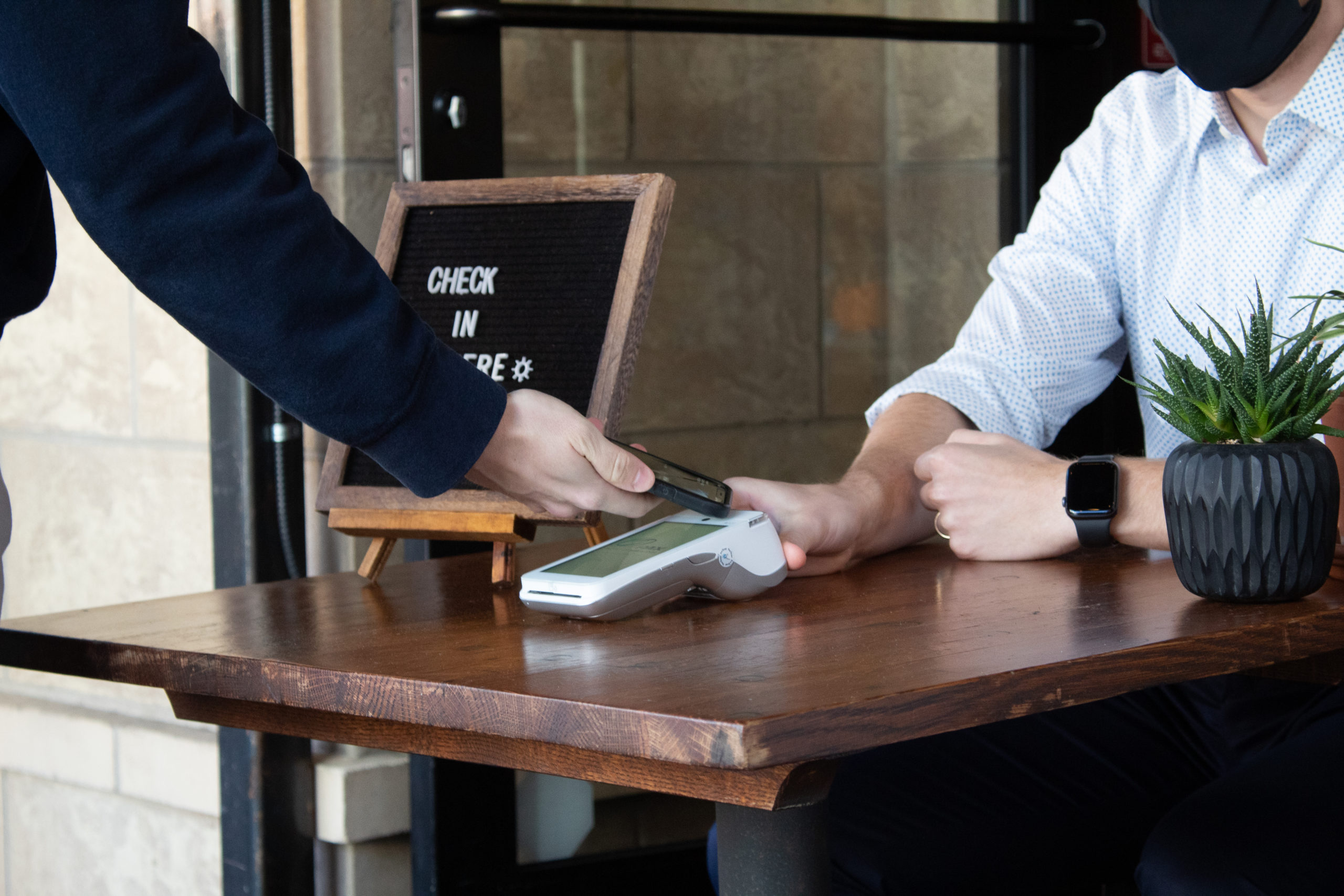
While the industry is certainly in a better place than eight or nine months ago with no end to the COVID-19 in sight, chances are that breweries will need to continue to implement its new strategies well into 2021.
“Contactless ordering has become a competitive advantage if done right,” said Frazer. “COVID undeniably and undoubtedly changed the landscape of contactless ordering forever. The operators that capitalize and pivot their business while continuing to make their guests happy and reduce labor are in a way better business perspective moving forward. Eventually, if you don’t have contactless ordering you’ll be behind.”
Luckily, innovations like GoTab are making it easier for taprooms and hospitality businesses to not just adapt and operate, but ultimately to succeed, push forward, and thrive.
This is a paid, sponsored post presented by GoTab.
Liked this article? Sign up for our newsletter to get the best craft beer writing on the web delivered straight to your inbox.

